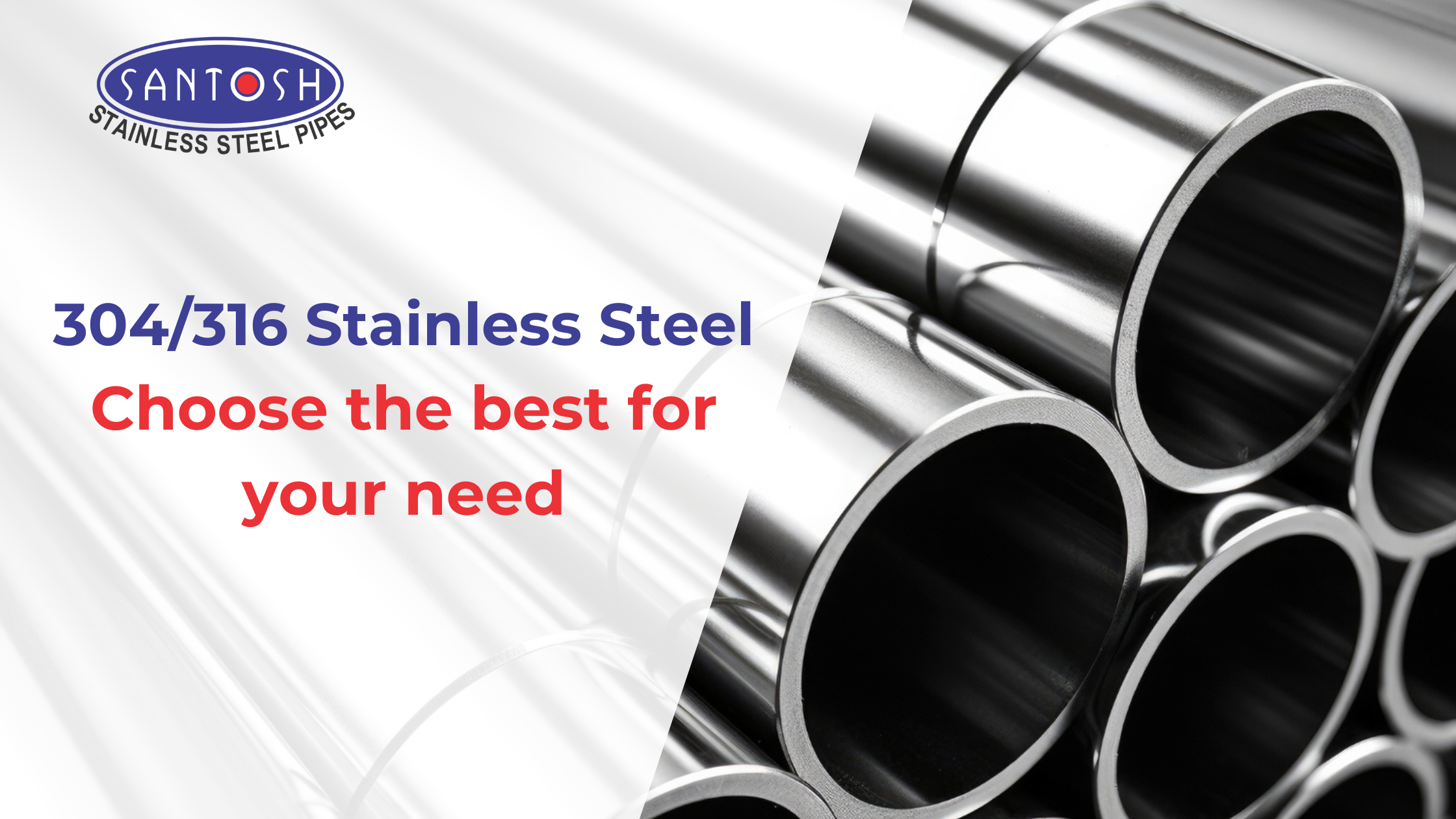
Stainless steel is a popular metal that can be found almost everywhere. It is commonly used in kitchen appliances and office railings due to its strength, resistance to rust, and appealing appearance. When it comes to stainless steel, 304 and 316 are the most commonly used. Choosing between them can be confusing, but don't worry! This blog will help you understand the differences and choose the best stainless steel for your next project.
The Nitty-Gritty: What Makes Stainless Steel Shine?
Both 304 and 316 are part of the austenitic stainless steel family. This fancy term basically means they have a special internal structure that grants them some awesome superpowers:
Rust and corrosion resistance: They shrug off moisture and everyday wear and tear, keeping your project looking sharp for years to come.
Bendy and flexible: They can be shaped and molded easily, making them ideal for all sorts of cool designs.
Easy to clean: A quick wipe with a cloth is all it takes to keep them sparkling.
But here's where things get interesting. The key difference between 304 and 316 is a special element called molybdenum. 304 has little to none of it, while 316 boasts a higher percentage. This seemingly small detail significantly impacts how they perform.
304 Stainless Steel: The All-Around Hero
Think of 304 as your versatile champion. It's the most widely used type of stainless steel, offering excellent:
Corrosion Resistance: Perfect for indoor applications, kitchens, appliances, and everyday use.
Affordability: Budget-friendly for most projects.
Workability: It bends, welds, and cuts easily, making it a favorite for DIY projects and professional contractors alike.
Beyond the Basics with 304
While 304 excels in general corrosion resistance, its formability makes it ideal for creating curved elements like sink bowls or decorative trims. Machinability is also excellent, allowing for easy drilling, cutting, and shaping during fabrication. In terms of aesthetics, 304 offers a beautiful polished silver finish that complements any modern kitchen or bathroom.
Ideal Applications for 304 Stainless Steel:
Kitchen countertops, sinks, and appliances: It'll keep your kitchen looking fresh and withstand the daily cooking grind.
Interior railings and trims: Adds a touch of modern elegance to your home.
Automotive trim and exhaust components: Provide a sleek look and handle heat well (within reason; we're not talking spaceships here).
Plumbing fixtures and bathroom hardware: Are durable and easy to maintain, making them perfect for keeping your bathroom sparkling.
Furniture and household items: Add a touch of elegance and durability to your everyday life.
316 Stainless Steel: The Champion for Tough Environments
Molybdenum is 316's secret weapon. This element enhances its:
Superior Corrosion Resistance: It thrives in harsh environments like coastal areas or high-chlorine settings where regular 304 might struggle.
High-Temperature Resistance: It can withstand extreme heat, making it suitable for industrial applications.
Beyond the Basics with 316
The increased molybdenum content in 316 gives it a slight edge in formability compared to 304. This means it can bend and take shape even more readily, making it ideal for intricate designs or tight corners. While machinability remains excellent, 316 might require slightly different drill bits or cutting techniques due to its subtle difference in composition. In terms of aesthetics, 316 offers a similar polished silver finish to 304.
Ideal Applications for 316 Stainless Steel:
Marine Applications: Boats, railings, and hardware that face constant saltwater exposure.
Chemical Processing Equipment: Tanks and pipes handle harsh chemicals.
Coastal Architecture: Understand the damaging effects of salt air.
Food processing equipment: Maintains hygiene and resists corrosion
Choosing Your Champion: A Helpful Guide
Here's a quick cheat sheet to help you pick your winner:
- For everyday indoor applications, kitchens, or budget-conscious projects: 304 is your champion.
- For projects facing harsh environments, coastal areas, high temperatures, or requiring superior corrosion resistance: 316 is the clear winner.
Conclusion
Now you've got the key differences between 304 and 316 stainless steel! Remember, both are fantastic choices, depending on your project's needs.
Still confused? Don't worry! The experts at Santosh Steel are here to help. We offer a wide range of both 304 and 316 stainless steel products. Our friendly team can answer your questions and guide you towards the perfect stainless steel for your specific needs.
Here at Santosh Steel, we believe in quality, affordability, and exceptional customer service. Visit our website today to explore our extensive selection of stainless steel products, or contact us to discuss your project in detail.
Let's make your project shine together!
FAQ’s
1. Is 304 or 316 stainless steel better?
There's no single "better" option; it depends on your specific needs. 304 stainless steel is great for most indoor applications and offers excellent corrosion resistance, affordability, and ease of fabrication. 316 stainless steel excels in harsh environments like coastal areas or with high-chlorine exposure due to its superior corrosion resistance and high-temperature tolerance.
2. Can I use 304 stainless steel outdoors?
In most covered outdoor areas with minimal exposure to harsh elements, 304 can work well. However, for coastal areas with constant saltwater spray or environments with high chlorine levels, 316 stainless steel is a safer bet for long-lasting performance.
3. Is 316 stainless steel magnetic?
No, neither 304 nor 316 stainless steel are magnetic in their standard form. Certain manufacturing processes can induce magnetism, but generally, they are non-magnetic.
4. Is 304 stainless steel rustproof?
Technically, no stainless steel is entirely rustproof. However, both 304 and 316 offer excellent corrosion resistance and resist rust formation under normal conditions. 316 provides superior resistance in harsher environments.
5. Where can I buy 304 and 316 stainless steel?
Reputable metal suppliers like Santosh Steel offer a wide variety of high-quality 304 and 316 stainless steel products. Santosh Steel can help you choose the right type for your project and ensure it meets the highest industry standards.